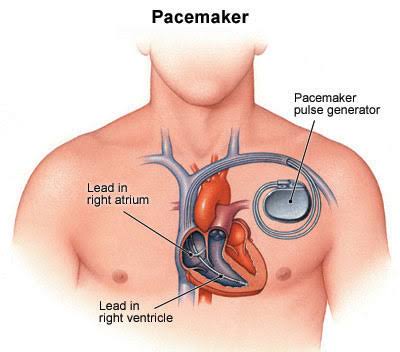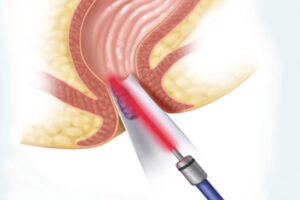What is a Heart Battery (Pacemaker)?
Heart Battery (Pacemaker) are state-of-the-art electronic devices that can provide electrical stimulation to the heart when necessary. It consists of battery, generator and cables. The metal box containing the electronic circuits that provide energy to the battery and manage the operation of the battery is called a generator.
The electrical communication between the heart and the generator is provided by cables called “lead”. The Heart Battery (Pacemaker) detects the electrical signals coming from the heart through these cables and, when necessary, stimulates the heart through these cables.
Why is a Heart Battery (Pacemaker) Fitted?
A Heart Battery (Pacemaker) is inserted because the heart’s stimulation center, namely the sinus node, cannot generate enough stimulation, the heart rate slows down, and the patient can continue to live accordingly.
In Which Situations Is a Heart Battery (Pacemaker) Fitted?
Heart Battery (Pacemaker) is generally placed in people who have heart rhythm disorder and conduction disorder in the heart. People with these problems may have a much slower or faster pulse than normal, and the person’s heart may also have trouble pumping enough blood. The pacemaker is the most effective tool used to solve these problems and significantly improves a person’s quality of life.
What is the Structure of the Pacemaker?
The Heart Battery consists of a generator that produces electrical impulses and an electrode that transmits electrical impulses. Generators carry batteries containing lithium. These batteries are placed inside the right or left chest wall or in the abdomen.
What are the Pacemaker Types?
-
Temporary Heart Battery (Pacemaker)
Temporary Pacemakers are devices that are inserted to be removed when the patient’s heartbeat returns to normal.
It enters from the neck, lower part of the collarbone, arm or groin area.
And this Pacemaker, which consists of a cable reaching the heart and a small box located on the outside of the body, can be easily removed when necessary.
-
Permanent Heart Battery (Pacemaker)
Generally, permanent pacemakers placed under the collarbone and just under the skin are preferred in the treatment of more chronic diseases such as atrioventricular block, tachycardia, bradycardia, hypertrophic cardiomyopathy and congestive heart failure.
Permanent batteries, which create the necessary stimulus for the heart to contract and relax, are classified in 3 different ways according to the stimulated region of the heart:
-
Single Chamber Battery:
It is a type of Heart Battery that consists of a single cable and is used to stimulate only the right atrium or right ventricle of the heart.
-
Two-Chamber Battery:
The batteries used to stimulate both the right ventricle and the right atrium of the heart are called two-chamber Pacemakers.
One of the two separate leads is placed in the right ventricle. The other is placed in the right atrium. And when necessary, contraction is provided in both the ventricle and the atrium.
-
Three-Chamber Battery:
This type of battery, also called a biventricular Heart Battery, is known as the Cardiac Reconstruction Therapy Battery (CRT-P) and has an important form of warning needed for the treatment of heart failure.
Thanks to three different cables placed in the right atrium, right ventricle and left ventricle regions of the heart, it is ensured that even the heart muscle, which has lost its strength, contracts correctly and that each chamber of the heart works synchronously.
How is a Heart Battery (Pacemaker) Inserted?
Pacemaker application is performed in sterile operating room conditions or in catheter laboratories. One day before the procedure, the patient’s intervention areas such as chest, armpit and groin are shaved. And each area is thoroughly cleaned with foam sponges. Then, the patient is taken to a sterile environment for the procedure and the area to be treated is cleaned by brushing with disinfectant solutions for 10 minutes just before the procedure.
The patient, who is brought to the appropriate position for the intervention, is covered with a dry sterile cloth. And the process begins in the operating room environment. Although regional anesthesia is generally preferred during pacemaker placement, heavy sedation or general anesthesia may be required in some cases.
Veins in the patient’s neck, armpit, arm or just below the collarbone are preferred for intervention. The pacemaker vein is entered through the catheter and the electrode part of the pacemaker is visualized with a fluoroscopy device and advanced to the heart.
The box-shaped part of the device, called the generator, is most likely located inside the right or left chest muscle. Then, the incisions made in the vein and muscle tissue are closed and the process is terminated. And if necessary, the patient is taken to the recovery unit.
How is a Temporary Heart Battery (Pacemaker) Fitted?
General anesthesia is not required in most cases when a pacemaker is inserted. The area where the pacemaker will be inserted is anesthetized with local anesthesia.
Assistance is obtained from an x-ray device that constantly monitors the surgical site from the inside and monitors the condition of the electrodes in the body. During the procedure, a large vein connected to the heart is selected.
An electrode is placed in the heart through this vein. Which vein to choose may vary depending on the condition of the person. The most commonly used veins in this procedure are the femoral vein in the groin, the subclavian vein in the shoulder region, and the jugular vein in the neck.
How Are Permanent Pacemakers and ICDs Fitted?
Implantation of permanent pacemakers and ICD devices is usually done in a similar way. The surgery is performed in a fully sterilized operating room or clinic.
Local anesthesia is used, such as a temporary pacemaker. The presence of scopic imaging devices is of great importance during the preparation and operation of the pacemaker placement procedure. With these imaging methods, the area where the pacemaker will be inserted is carefully monitored and a point shot is made.
A small incision is then made just below the person’s collarbone. The size of this cut is about 3 cm. The “generator”, which is part of the pacemaker device, is inserted through this incision. Permanent pacemakers may have more electrodes than temporary pacemakers.
These electrodes are placed in the chamber(s) of the heart through a vein running just below the collarbone. Electrodes are placed in the chambers of the heart. And then the connection between the generator and the electrode is established. The incision is closed and the operation is terminated.
Is Heart Battery (Pacemaker) Insertion Risky?
Pacemaker implantation is a smaller procedure compared to other surgical operations. Therefore, the occurrence of unwanted complications in the person is very unlikely.
Complications that may occur after surgery are generally low-risk and do not reach a level that threatens the person’s life.
Although very rarely, there may be cases such as rupture of the membrane layer in the lung during the incision during the surgery, accidental entry into the artery instead of the vein.
Although it is not very common, sometimes the area where the operation was performed may become infected after the patient is discharged. To eliminate this possibility, antibiotic drugs are usually given to the patient after surgery.
Sometimes, the generator and electrodes connected to the pacemaker can come out of the skin. In this case, the operation area is opened again. And the pacemaker is repaired.
Considerations After Heart Battery (Pacemaker) Surgery
- Pain may be seen in the first week after the procedure. During this period, only painkillers approved by the physician should be used.
- Fever over 38°C with conditions such as redness, bleeding, edema and discharge in the operated area are signs of infection after the procedure.
- One of the most important points to be considered after pacemaker surgery should be signs of infection. Because infections that occur after heart-related procedures can lead to serious health problems.
- In the presence of any of the aforementioned findings, a doctor’s control should be consulted for a detailed examination.
- If the pacemaker is placed over the arm, it may be necessary to restrict arm movements on the side of the pacemaker for the first 1-2 months. If the battery is inserted through the trunk area, no arm restraint is required.
- During the first 2 months, it is necessary not to lie on the side where the pacemaker is inserted and to avoid other activities that put severe pressure on this area.
- The pacemaker is affected by many rays such as X-rays and magnetic resonance. For this reason, patients with pacemakers should not pass through the X-ray scanning devices at airports, shopping malls, police and courthouse entrances.
- Power plants, base stations, weapon detectors, police radar fields, high voltage lines may cause changes in pacemaker functions.
- If people with a pacemaker are exposed to such effects, they should contact a cardiologist and pacemaker company and have the device checked.







